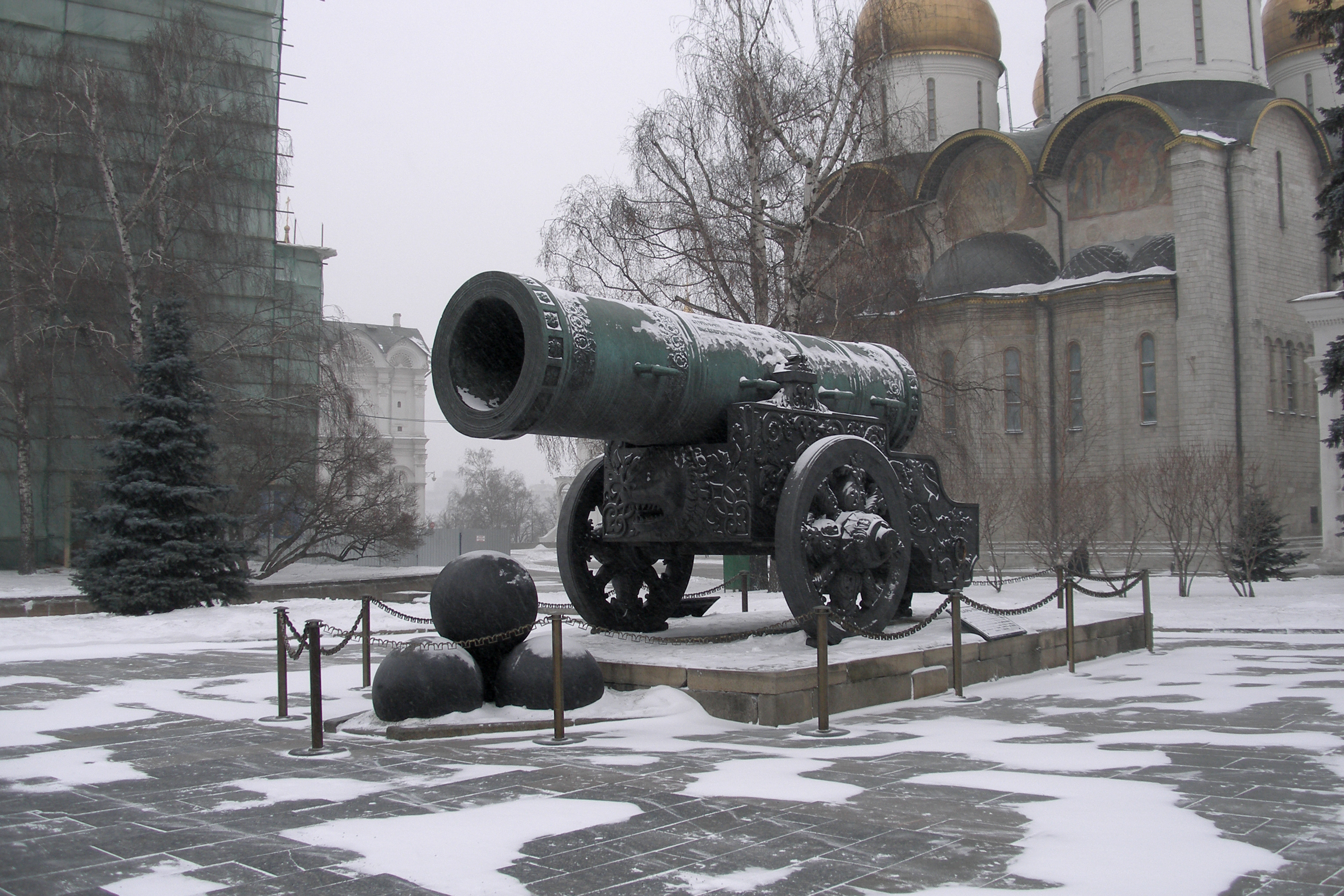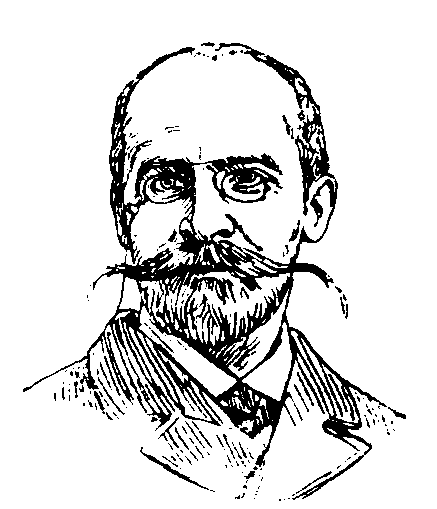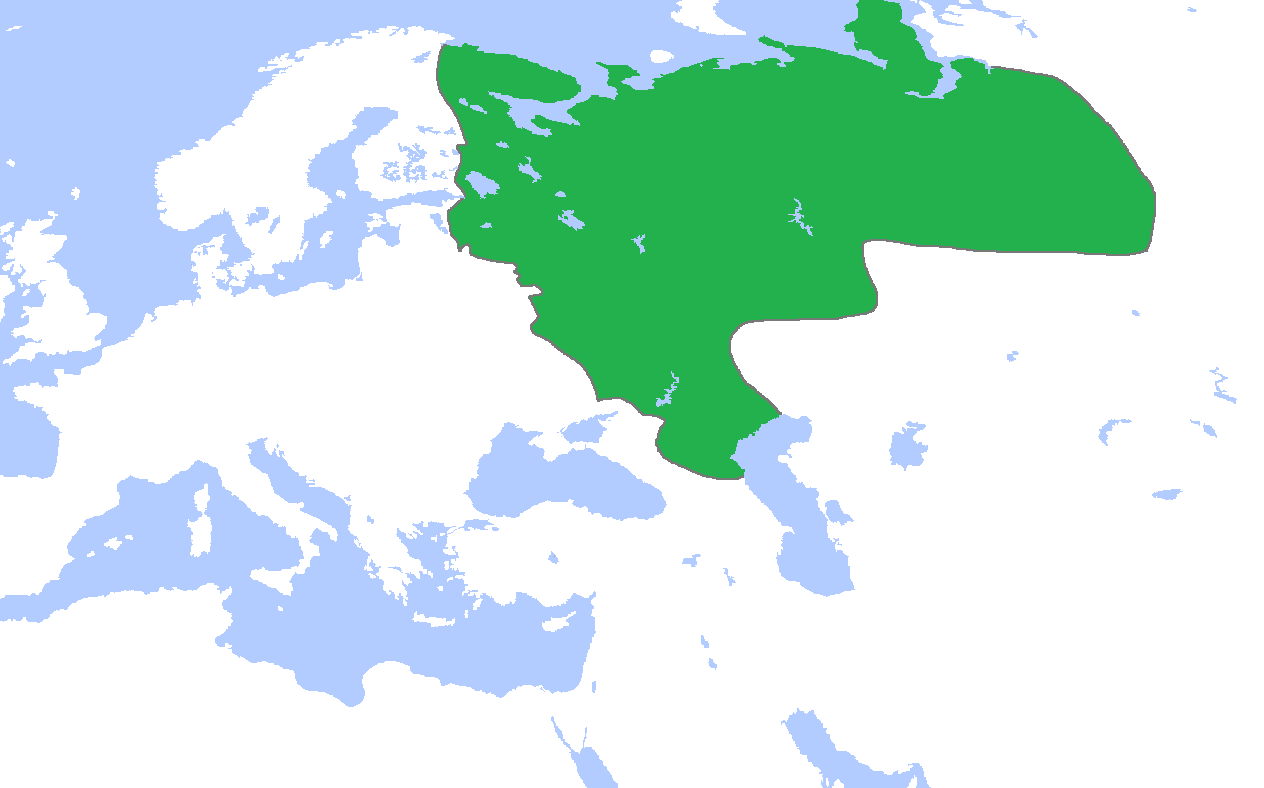|
Andrey Chokhov
Andrey Chokhov, also spelled Chekhov (''Андрей Чохов (Чехов)'' in Russian) (c. 1545 – 1629, allegedly 8 December, Moscow) was a highly prominent Russian cannon and bell caster. He worked in Moscow at the Cannon Yard for more than 40 years, where he was responsible for casting many heavy weapons. Over 20 were documented, from 1568 to 1629, including the Tsar Cannon cast in 1586. His traditions were continued by the Motorin family. Biography Andrey Chokhov was born in about 1545, and entered the teaching of the well-known master cannon caster Kashpir Ganusov at a very young age, and stood out from the mass of Ganusov's students who performed regular work. Chokhov took the lead in casting cannons in Moscow in 1590. Chokhov as cannon maker Andrey Chokhov began his career at the Cannon yard in Moscow during the reign of Ivan the Terrible in the 1550s as an apprentice to a German (?) caster Kashpir Ganusov (russified name). In the 1570s, Chokhov became one ... [...More Info...] [...Related Items...] OR: [Wikipedia] [Google] [Baidu] |
Russian Language
Russian (russian: русский язык, russkij jazyk, link=no, ) is an East Slavic languages, East Slavic language mainly spoken in Russia. It is the First language, native language of the Russians, and belongs to the Indo-European languages, Indo-European language family. It is one of four living East Slavic languages, and is also a part of the larger Balto-Slavic languages. Besides Russia itself, Russian is an official language in Belarus, Kazakhstan, and Kyrgyzstan, and is used widely as a lingua franca throughout Ukraine, the Caucasus, Central Asia, and to some extent in the Baltic states. It was the De facto#National languages, ''de facto'' language of the former Soviet Union,1977 Soviet Constitution, Constitution and Fundamental Law of the Union of Soviet Socialist Republics, 1977: Section II, Chapter 6, Article 36 and continues to be used in public life with varying proficiency in all of the post-Soviet states. Russian has over 258 million total speakers worldwide. ... [...More Info...] [...Related Items...] OR: [Wikipedia] [Google] [Baidu] |
Bellfounding
Bellfounding is the casting and tuning of large bronze bells in a foundry for use such as in churches, clock towers and public buildings, either to signify the time or an event, or as a musical carillon or chime. Large bells are made by casting bell metal in moulds designed for their intended musical pitches. Further fine tuning is then performed using a lathe to shave metal from the bell to produce a distinctive bell tone by sounding the correct musical harmonics. Bellfounding in East Asia dates from about 2000 BCE and in Europe from the 4th or 5th century CE. In Britain, archaeological excavations have revealed traces of furnaces, showing that bells were often cast on site in pits in a church or its grounds. Centralised foundries became common when railways allowed easy transportation of bells, leading to the dominance of founders such as the Whitechapel Bell Foundry and John Taylor & Co of Loughborough. Elsewhere in the world a number of foundries are still activ ... [...More Info...] [...Related Items...] OR: [Wikipedia] [Google] [Baidu] |
Foundrymen
A foundry is a factory that produces metal castings. Metals are cast into shapes by melting them into a liquid, pouring the metal into a mold, and removing the mold material after the metal has solidified as it cools. The most common metals processed are aluminum and cast iron. However, other metals, such as bronze, brass, steel, magnesium, and zinc, are also used to produce castings in foundries. In this process, parts of desired shapes and sizes can be formed. Foundries are one of the largest contributors to the manufacturing recycling movement, melting and recasting millions of tons of scrap metal every year to create new durable goods. Moreover, many foundries use sand in their molding process. These foundries often use, recondition, and reuse sand, which is another form of recycling. Process In metalworking, casting involves pouring liquid metal into a mold, which contains a hollow cavity of the desired shape, and then allowing it to cool and solidify. The solidified pa ... [...More Info...] [...Related Items...] OR: [Wikipedia] [Google] [Baidu] |
Russian Inventors
This is a list of inventors from the Russian Federation, Soviet Union, Russian Empire, Tsardom of Russia and Grand Duchy of Moscow, including both ethnic Russians and people of other ethnicities. This list also includes those who were born in Russia or its predecessor states but later emigrated, and those who were born elsewhere but immigrated to the country or worked there for a considerable time, (producing inventions on Russian soil). For Russian inventions in chronological order, see the Timeline of Russian inventions and technology records. Alphabetical list A B C D E F G H I J K L M N O P R S T U V W Y Z See also * List of Russian scientists * Russian culture * Timeline of Russian inventions and technology records References {{DEFAULTSORT:Russian Inventors * Inventors Lists of inventors Inventors An invention is a unique or novel device, method, composition, idea or process. An invention may be an improvemen ... [...More Info...] [...Related Items...] OR: [Wikipedia] [Google] [Baidu] |
Russian Cannon Makers
Russian(s) refers to anything related to Russia, including: *Russians (, ''russkiye''), an ethnic group of the East Slavic peoples, primarily living in Russia and neighboring countries *Rossiyane (), Russian language term for all citizens and people of Russia, regardless of ethnicity *Russophone, Russian-speaking person (, ''russkogovoryashchy'', ''russkoyazychny'') *Russian language, the most widely spoken of the Slavic languages *Russian alphabet *Russian cuisine *Russian culture *Russian studies Russian may also refer to: *Russian dressing *''The Russians'', a book by Hedrick Smith *Russian (comics), fictional Marvel Comics supervillain from ''The Punisher'' series *Russian (solitaire), a card game * "Russians" (song), from the album ''The Dream of the Blue Turtles'' by Sting *"Russian", from the album ''Tubular Bells 2003'' by Mike Oldfield *"Russian", from the album '' '' by Caravan Palace *Nik Russian, the perpetrator of a con committed in 2002 *The South African name for a ... [...More Info...] [...Related Items...] OR: [Wikipedia] [Google] [Baidu] |
Russian Bell Makers
Russian(s) refers to anything related to Russia, including: *Russians (, ''russkiye''), an ethnic group of the East Slavic peoples, primarily living in Russia and neighboring countries *Rossiyane (), Russian language term for all citizens and people of Russia, regardless of ethnicity *Russophone, Russian-speaking person (, ''russkogovoryashchy'', ''russkoyazychny'') *Russian language, the most widely spoken of the Slavic languages *Russian alphabet *Russian cuisine *Russian culture *Russian studies Russian may also refer to: *Russian dressing *''The Russians'', a book by Hedrick Smith *Russian (comics), fictional Marvel Comics supervillain from ''The Punisher'' series *Russian (solitaire), a card game * "Russians" (song), from the album ''The Dream of the Blue Turtles'' by Sting *"Russian", from the album ''Tubular Bells 2003'' by Mike Oldfield *"Russian", from the album '' '' by Caravan Palace *Nik Russian, the perpetrator of a con committed in 2002 *The South African name for a ... [...More Info...] [...Related Items...] OR: [Wikipedia] [Google] [Baidu] |
List Of Russian Inventors
This is a list of inventors from the Russian Federation, Soviet Union, Russian Empire, Tsardom of Russia and Grand Duchy of Moscow, including both ethnic Russians and people of other ethnicities. This list also includes those who were born in Russia or its predecessor states but later emigrated, and those who were born elsewhere but immigrated to the country or worked there for a considerable time, (producing inventions on Russian soil). For Russian inventions in chronological order, see the Timeline of Russian inventions and technology records. Alphabetical list A B C D E F G H I J K L M N O P R S T U V W Y Z See also * List of Russian scientists * Russian culture * Timeline of Russian inventions and technology records References {{DEFAULTSORT:Russian Inventors Russian inventors, * Lists of Russian people by occupation, Inventors Lists of inventors Russia history-related lists, Inventors ... [...More Info...] [...Related Items...] OR: [Wikipedia] [Google] [Baidu] |
Bell Tower
A bell tower is a tower that contains one or more bells, or that is designed to hold bells even if it has none. Such a tower commonly serves as part of a Christian church, and will contain church bells, but there are also many secular bell towers, often part of a municipal building, an educational establishment, or a tower built specifically to house a carillon. Church bell towers often incorporate clocks, and secular towers usually do, as a public service. The term campanile (, also , ), deriving from the Italian ''campanile'', which in turn derives from ''campana'', meaning "bell", is synonymous with ''bell tower''; though in English usage campanile tends to be used to refer to a free standing bell tower. A bell tower may also in some traditions be called a belfry, though this term may also refer specifically to the substructure that houses the bells and the ringers rather than the complete tower. The tallest free-standing bell tower in the world, high, is the Mortegliano B ... [...More Info...] [...Related Items...] OR: [Wikipedia] [Google] [Baidu] |
Storey
A storey (British English) or story (American English) is any level part of a building with a floor that could be used by people (for living, work, storage, recreation, etc.). Plurals for the word are ''storeys'' (UK) and ''stories'' (US). The terms ''floor'', ''level'', or ''deck'' are used in similar ways, except that it is usual to speak of a "16-''storey'' building", but "the 16th ''floor''". The floor at ground or street level is called the "ground floor" (i.e. it needs no number; the floor below it is called "basement", and the floor above it is called "first") in many regions. However, in some regions, like the U.S., ''ground floor'' is synonymous with ''first floor'', leading to differing numberings of floors, depending on region – even between different national varieties of English. The words ''storey'' and ''floor'' normally exclude levels of the building that are not covered by a roof, such as the terrace on the rooftops of many buildings. Nevertheless, a flat r ... [...More Info...] [...Related Items...] OR: [Wikipedia] [Google] [Baidu] |
Ivan The Great Bell Tower
The Ivan the Great Bell Tower (russian: Колокольня Иван Великий, ''Kolokol'nya Ivan Velikiy'') is a church tower inside the Moscow Kremlin complex. With a total height of , it is the tallest tower and structure of the Kremlin. It was built in 1508 on Cathedral Square for the three Russian Orthodox cathedrals, namely the Assumption (closest to the tower), the Archangel and the Annunciation, which do not have their own belfries. It serves as a part of Moscow Kremlin Museums. History From 1329, Moscow's first stone bell tower stood on this site, affiliated with the Church of St. Ivan of the Ladder-under-the Bell, hence the name "Ivan" in the title. This church was erected by Grand Duke Ivan Kalita, and was one of the first to be built in Moscow out of stone, rather than wood. During Grand Duke Ivan III’s major renovation of the Kremlin, he hired an Italian architect to replace this church. Construction was begun in 1505, the year of Ivan’s death, and w ... [...More Info...] [...Related Items...] OR: [Wikipedia] [Google] [Baidu] |
Troitse-Sergiyeva Lavra
The Trinity Lavra of St. Sergius (russian: Тро́ице-Се́ргиева ла́вра) is the most important Russian monastery and the spiritual centre of the Russian Orthodox Church. The monastery is situated in the town of Sergiyev Posad, about 70 km to the north-east from Moscow by the road leading to Yaroslavl, and currently is home to over 300 monks. History 14th century The monastery was founded in 1337 by one of the most venerated Russian saints, Sergius of Radonezh, who built a wooden church in honour of the Holy Trinity on Makovets Hill. Early development of the monastic community is well documented in contemporary lives of Sergius and his disciples. In 1355, Sergius introduced a charter which required the construction of auxiliary buildings, such as refectory, kitchen, and bakery. This charter was a model for Sergius' numerous followers who founded more than 400 cloisters all over Russia, including the celebrated Solovetsky, Kirillov, and Simonov mona ... [...More Info...] [...Related Items...] OR: [Wikipedia] [Google] [Baidu] |
Boris Godunov
Borís Fyodorovich Godunóv (; russian: Борис Фёдорович Годунов; 1552 ) ruled the Tsardom of Russia as ''de facto'' regent from c. 1585 to 1598 and then as the first non-Rurikid tsar from 1598 to 1605. After the end of his reign, Russia descended into the Time of Troubles. Early years Boris Godunov was the most noted member of an ancient, now extinct, Russian family of Tatar origin ( Chet), which came from the Horde to Kostroma in the early 14th century. This cites: * Platon Vasilievich Pavlov, ''On the Historical Significance of the Reign of Boris Godunov'' (Rus.) (Moscow, 1850) * Sergyei Mikhailivich Solovev, ''History of Russia'' (Rus.) (2nd ed., vols. vii–viii., St Petersburg, 1897). This legend is written in the annals dating from early 17th century. He was descended from the Tatar Prince Chet, who went from the Golden Horde to Russia and founded the Ipatiev Monastery in Kostroma. Boris was probably born before or after the Kazan campaign. Boris was ... [...More Info...] [...Related Items...] OR: [Wikipedia] [Google] [Baidu] |






.jpg)

